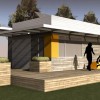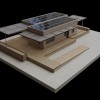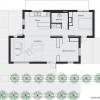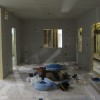2011 Solar Decathlon: University of Illinois at Urbana-Champaign's Re_home
Video
When disaster-prone states come to mind, California, Florida, and Louisiana likely top the list. Surprisingly, an average of eight strong-to-violent tornadoes hit Illinois each year, and because the damage to homes is often random, many homeowners don't qualify for Federal Emergency Management Agency (FEMA) funding. Students of the University of Illinois at Urbana-Champaign participating in the 2011 Solar Decathlon competition identified an opportunity to create a disaster housing solution that is much more comfortable and attractive than the typical trailer. The design of Re_home features flexible spaces to accommodate the diverse needs of families while fostering community recovery.

Re_home's design offers a "fresh perspective on the familiar Prairie Style aesthetic," according to Beth Newman, a candidate for dual MBA and M.Arch. degrees and the team's Project Manager and Public Relations representative. The effect is modern but also warm and inviting. Although the team is considering cladding the exterior of the home in locally harvested cedar siding, they ultimately would like to provide options so that families can personalize them to suit their preferences.

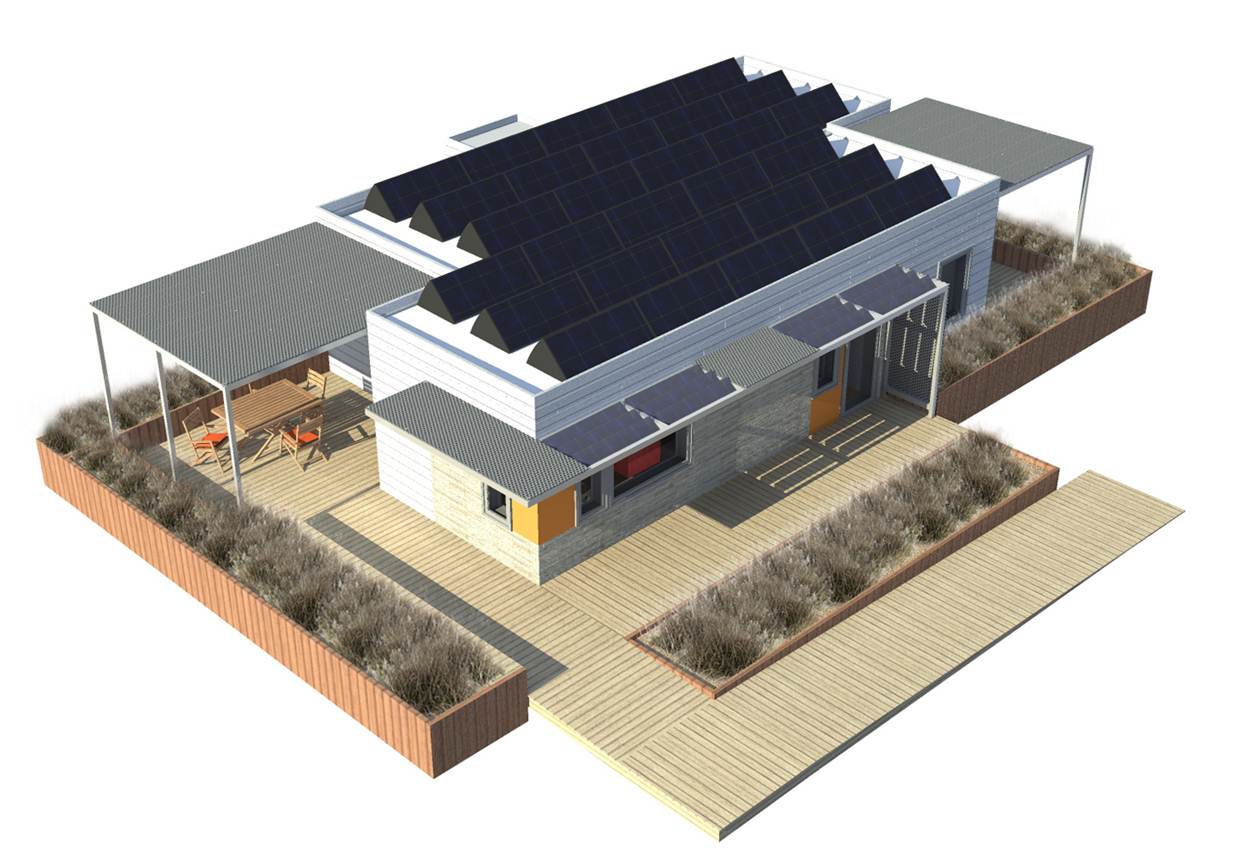
Defining interior and exterior spaces for socializing was a priority for the team: "We wanted to create as much open space as possible to encourage community gatherings," explains Newman. A front porch shaded by a canopy encourages visitors to mingle. The entrance leads to a combined living room and kitchen, which expands onto a large deck. Within this common area, friends and neighbors can gather and discuss goings-on and plans to rebuild the community.
In order to maximize a small footprint, the design of the house features built-in furnishings that allow for flexibility. Technically, the Re_home was conceived as a two-bedroom home, but the second bedroom can be converted easily into a home office, depending on each family's needs. The frustration of packing a whole home's worth of belongings into a temporary space is eased through creative storage ideas conceived by industrial design students.
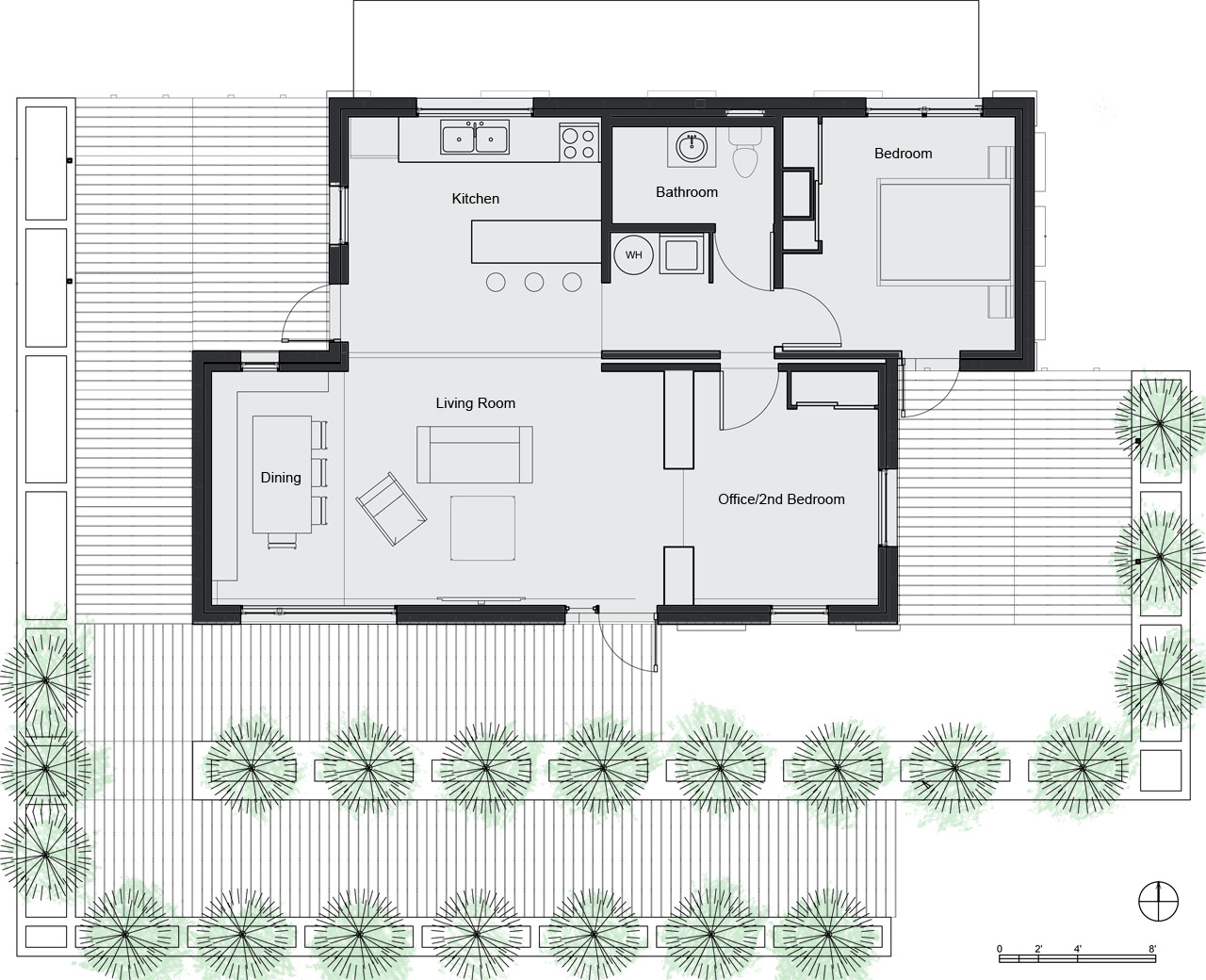
The capability for off-grid living is a must when municipal sources are disabled in the wake of a storm. To that end, Re_home features solar roof panels to meet its electrical needs. The design will also incorporate a rainwater collection system to run the toilets and provide water for landscaping. In a truly self-sufficient model for living, residents can grow their own fruits and vegetables. The presence of landscaping also helps to better integrate the home so it feels less like a temporary disaster relief trailer.
By providing an efficient, affordable, and comfortable living solution, the students of the University of Illinois at Urbana-Champaign's Solar Decathlon team hope that disaster victims will be more likely to stay and rebuild their permanent homes. Although it is impossible to prevent these disasters, Re_home will help families to cope in their wake.

Murrye Bernard
Murrye is a freelance writer based in New York City. She holds a Bachelor's degree in Architecture from the University of Arkansas and is a LEED-accredited professional. Her work has been published in Architectural Record, Eco-Structure, and Architectural Lighting, among others. She also serves as a contributing editor for the American Institute of Architects' New York Chapter publication, eOculus.
Website: www.murrye.com
